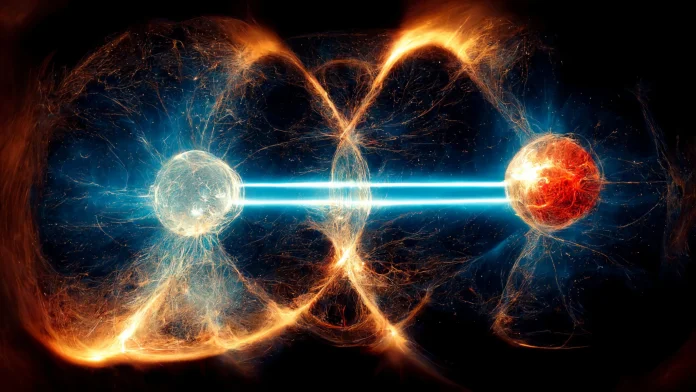Imagine two particles—no matter how far apart—mirroring each other’s actions instantly. Change one, and the other responds immediately. No wires. No signals. Just… magic? Not quite. Welcome to the perplexing world of quantum entanglement, where the rules of classical physics are tossed out the window, and reality behaves more like science fiction.
What Is Quantum Entanglement?
Quantum entanglement is a phenomenon in quantum physics where two or more particles become linked in such a way that the state of one instantly affects the state of the other, no matter the distance between them. If this sounds weird, that’s because it is.
Entangled particles behave as a single system. When you measure the state (like spin or polarization) of one particle, the outcome of the other is instantly determined—even if they’re on opposite sides of the galaxy.
Einstein was so baffled by this that he famously called it “spooky action at a distance.”
The Science Behind the Spookiness
Entanglement starts when particles interact in a specific way—like during a quantum collision or decay—and become part of a shared quantum state. Once entangled, measuring one particle’s properties collapses its wave function, immediately defining the state of the other, even if separated by billions of kilometers.
But here’s the kicker: no information is actually transmitted faster than light, which means it doesn’t violate Einstein’s theory of relativity—at least not in any conventional way. Scientists believe the particles exist in a shared quantum state until measured. It’s not communication; it’s correlation.
Experiments That Blew Scientists’ Minds
Bell Test Experiments – Physicist John Bell proposed a way to test whether particles really are connected or if there are “hidden variables” involved. The results? Entanglement is real—no hidden tricks.
The 2015 Loophole-Free Experiment – Conducted by a team in the Netherlands, this experiment finally closed major loopholes that skeptics had long clung to. It provided the strongest evidence yet that entanglement exists and behaves as predicted.
Applications of Quantum Entanglement
Though bizarre, entanglement has some real-world applications that are just as wild as the theory itself:
Quantum Computing: Entanglement is the backbone of qubits—the basic units of quantum computers—which can process vast amounts of data simultaneously.
Quantum Cryptography: Secure communication systems are being built using entangled photons that can detect any eavesdropping attempts.
Quantum Teleportation: No, it’s not like Star Trek. But researchers have successfully transferred quantum states from one location to another using entanglement—an early step toward real quantum networks.
So, Are Particles Talking to Each Other?
It might feel like these particles are whispering secrets across the universe, but the truth is more abstract. The particles aren’t sending messages—they’re entangled, behaving as one inseparable entity even when apart. It’s not communication as we know it—it’s more like a cosmic dance with perfect synchronization.
Final Thoughts: The Universe Is Stranger Than We Think
Quantum entanglement challenges our deepest beliefs about space, time, and reality. It hints at a universe far more interconnected and mysterious than we ever imagined. While we’ve only scratched the surface, one thing’s for sure: the quantum world plays by its own bizarre rules.



